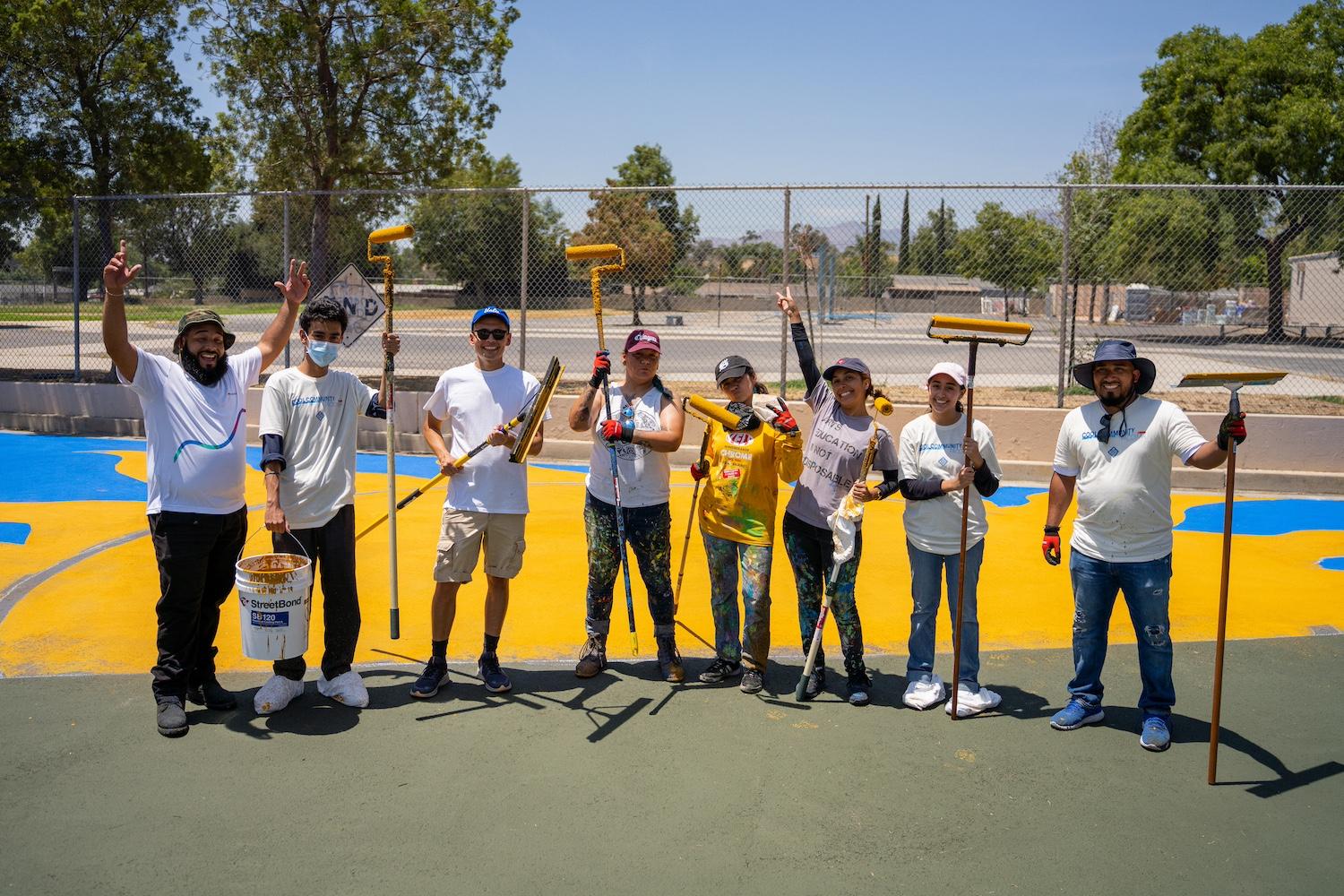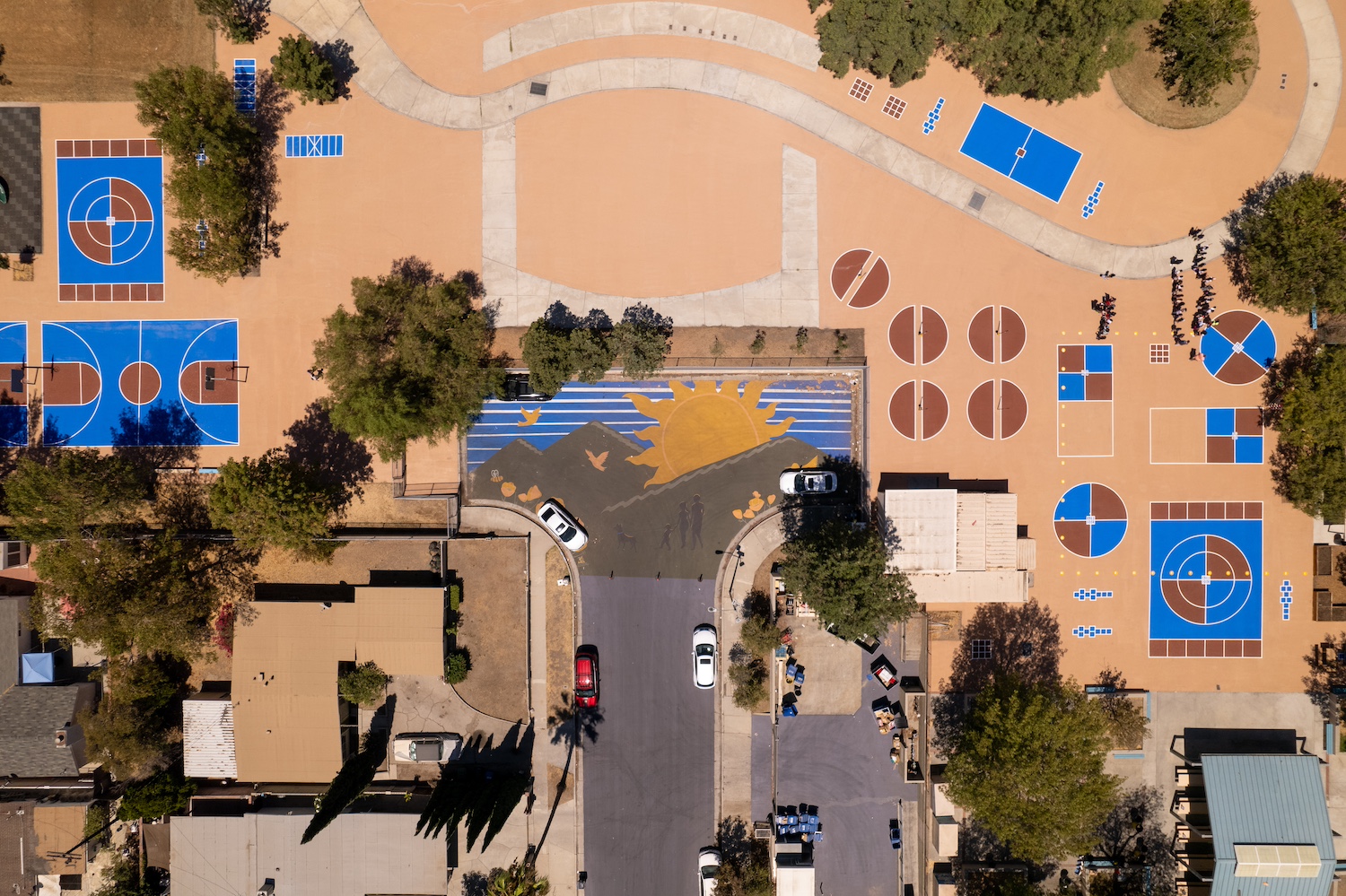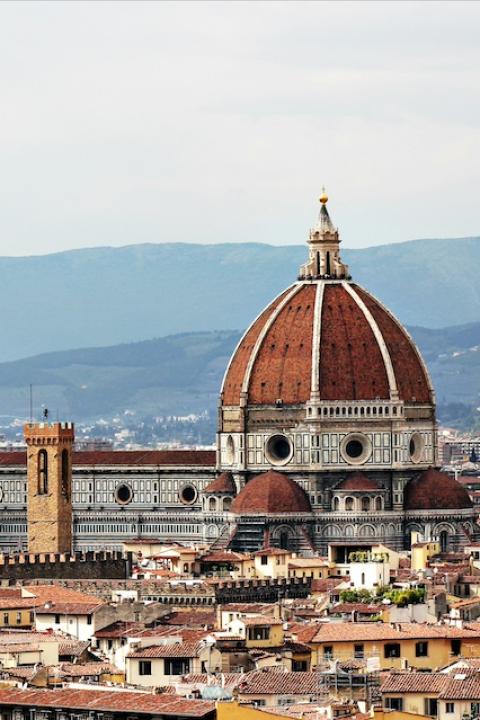
Volunteers paint a mural on a street using cool pavement coatings in the Pacoima neighborhood of Los Angeles as part of the GAF Cool Community Project. (Image courtesy of GAF)
Urban heat waves are increasing in frequency, duration and severity, and cities are in desperate need of solutions. One of the simpler emerging fixes is the use of cool pavement coatings. These coatings decrease both the surface temperature of the ground and the air temperature around it, according to a recent study funded by the roofing and waterproofing manufacturer GAF.
The study looked at coated pavement in the Pacoima neighborhood of Los Angeles, one of the hottest areas in the city and the site of the GAF Cool Community Project, an initiative looking for community-wide ways to address urban heat. The pavement coatings came from GAF brand StreetBond and use a technology it calls “Invisible Shade” to reflect the sun’s rays.
Similar to paint, the coatings can be applied to things like roads, playground surfaces, and sidewalks as a clear coat or as a color. This approach could help humans, pets and urban wildlife adapt to our new normal as the planet’s temperature continues to rise.
“Cool pavements are effective under a wide range of weather and environmental conditions,” said Haider Taha, lead researcher on the study and president of the atmosphere research company Altostratus, which helped develop California’s urban heat island index. “They are most effective when needed the most — that is, during the sunnier, hotter summer days. Some of the larger reductions in temperature from the cool pavement coating were observed during a heat wave event, which was an instance when the coatings were most effective.”
How do cool pavement coatings work?
“Cool pavement coatings work to increase the reflection of infrared radiation, which impacts heating at both the surface level and higher in the atmosphere,” said Eliot Wall, a senior director at GAF.
In the study, treated pavement surfaces in Pacoima measured 8 to 14 degrees Fahrenheit cooler than non-treated surfaces in the same neighborhood, according to GAF. The air temperature around the coated pavement was also up to 2 degrees Fahrenheit cooler on sunny days and up to 3.5 degrees cooler during a heat wave, Taha said. Even at night, the air was half a degree cooler.
“Reflective pavements can be slightly less influential when there is less direct solar radiation, such as in areas that are constantly in the shade,” Taha said. “But even there, the cooling effect is significant.”
The pavement coating also has a diminished effect when skies are cloudier and there is less heat to reflect in the first place, he added. This is beneficial since it won’t increase the need for artificial heating during the winter.

Combatting the urban heat island index
“The urban heat island index (UHII) is a measure of how much hotter an urban area is relative to its more natural surroundings,” Taha explained. “As the weather becomes hotter, the UHII increases, requiring more air conditioning and limiting residents’ ability to go outside without experiencing the effects of extreme heat.”
Cities that experience these high temperatures are known as urban heat islands and usually have few plants and trees but plenty of heat-absorbing materials like dark pavement and roofing. Combatting this phenomenon is becoming more and more important with increasing temperatures. People and animals can suffer significant negative health events, including heat-related illnesses and death, from the heat trapped in urban areas. Even a much-needed walk can result in burnt paw pads, making shade and cooler surfaces necessary for pets as well.
Residents can feel the difference
Pacoima residents are getting back outdoors thanks to the use of cool pavement coatings, Taha said. “They’ve seen children back outside and playing on the neighborhood basketball courts again,” he told us.
Community members say they feel the heat less intensely where the cool coating was applied, especially through their shoes, and want to see it used across more of the neighborhood, Wall added.
The coating also adds to the aesthetic appeal of the neighborhood, as it is available in quite a few colors beyond the standard gray. “Solar-reflective coatings enable communities to turn pavement into works of art, making spaces beautiful and safe while mitigating extreme heat,” Taha said.
The coating can also extend the life of new roads by up to nine years, Wall said. That’s good news for residents and municipalities, as it can potentially cut down on maintenance. When applied to existing pavement, the coating should last five to seven years.
One solution can’t fix the whole problem
The study focused on cool pavement coatings and did not include other measures of lowering urban heat, but Altostratus has done other research that shows the benefits of cool pavement coating will increase in conjunction with additional methods.
“Tackling urban heat at a community-wide level will require a toolbox of solutions in addition to shade and nature-based solutions,” Taha said. “To help communities adapt, solar-reflective coatings and cool roofing technology should be tools every municipality is looking to incorporate into infrastructure, roads, and building repairs and plans moving forward.”
No single solution will be enough to shield urban areas from rising average temperatures or increased heatwaves. As with the fight against the climate crisis in general, cities need to look toward a combination of solutions — including better public transit, expanded parks and green spaces, and more. Cool pavement coatings are a promising part of a multi-dimensional approach.

Riya Anne Polcastro is an author, photographer and adventurer based out of the Pacific Northwest. She enjoys writing just about anything, from gritty fiction to business and environmental issues. She is especially interested in how sustainability can be harnessed to encourage economic and environmental equity between the Global South and North. One day she hopes to travel the world with nothing but a backpack and her trusty laptop.













